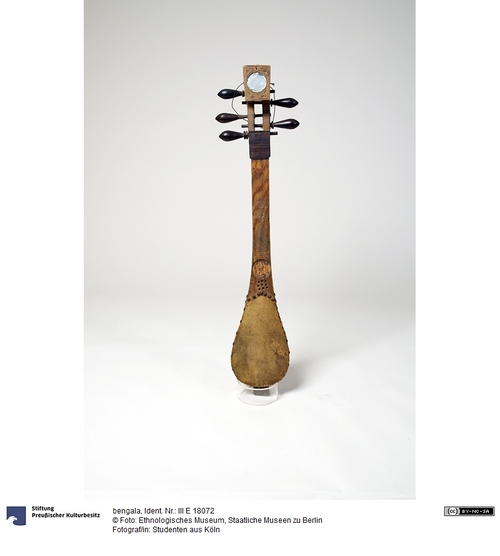Wie Nr. 290. [III E 346] Das Saitenmaterial fehlt jedoch ganz. Die Saitenführungskerben im Sattel deuten in ihrer Anordnung auf zwei Doppelchöre und einen einfachen Chor hin. Fünf linksständige Flankenwirbel aus Holz mit langen, tropfenförmigen Köpfen. Im Hals eine runde Vertiefung sowie eine Gruppe von neun kleinen, runden Perforationen. Eine runde Öffnung in der Korpusschale. Kerbschnittmuster am Wirbelkasten und auf der Halsdecke.
aus Ulrich Wegner: Afrikanische Saiteninstrumente, Staatliche Museen Berlin – SPK, 1984 (Anhang Objektkatalog)
Angaben zur Herkunft:
historische Bezeichnung: Deutsch-Ostafrika (Kolonie/"Schutzgebiet")
heutige Bezeichnung: Tanzania (Land)
Swahili (Ethnie)
en

